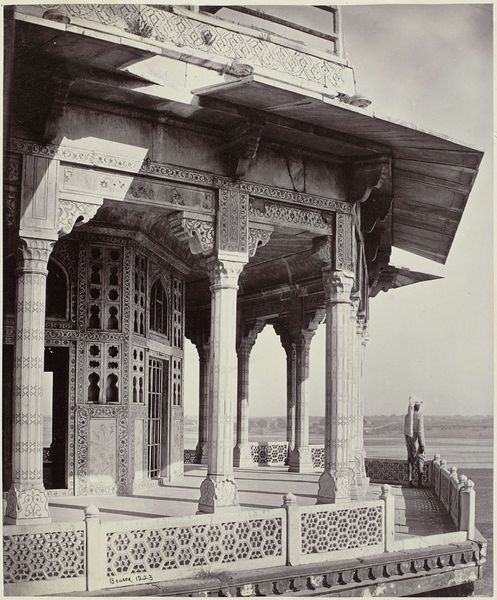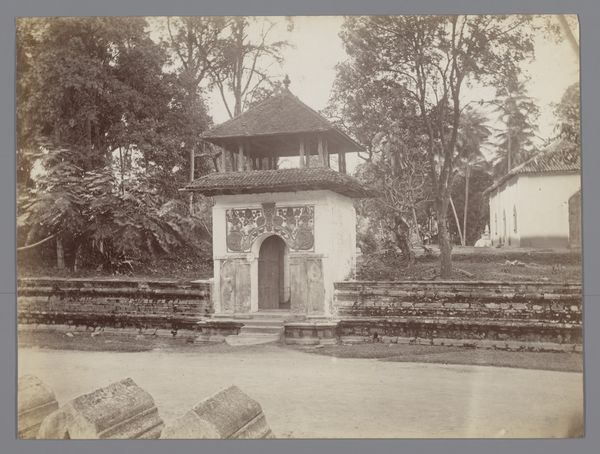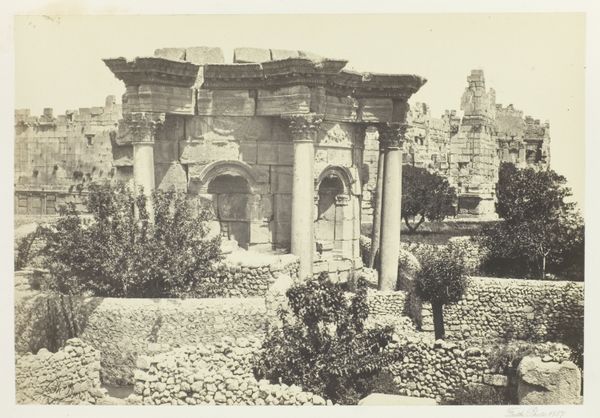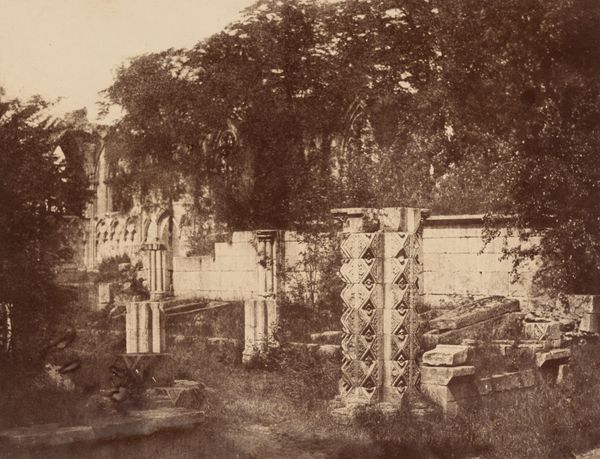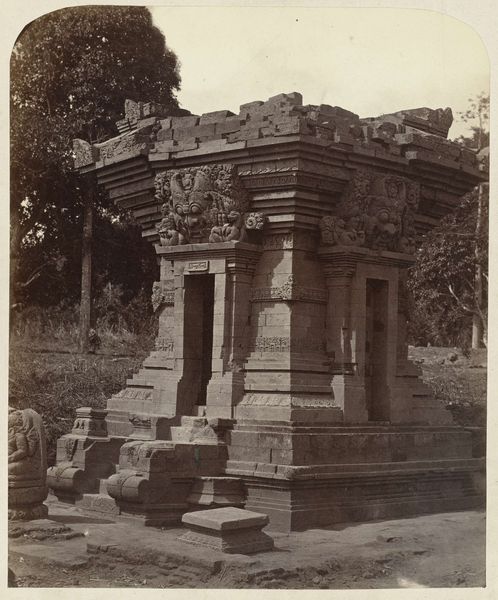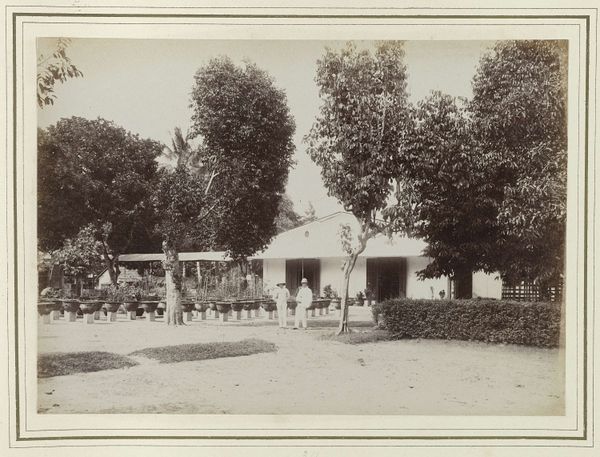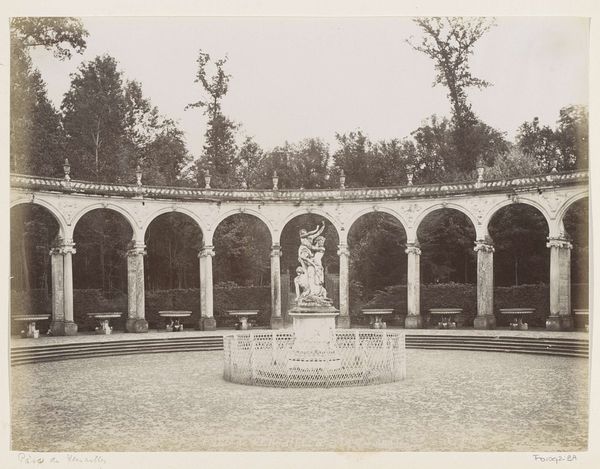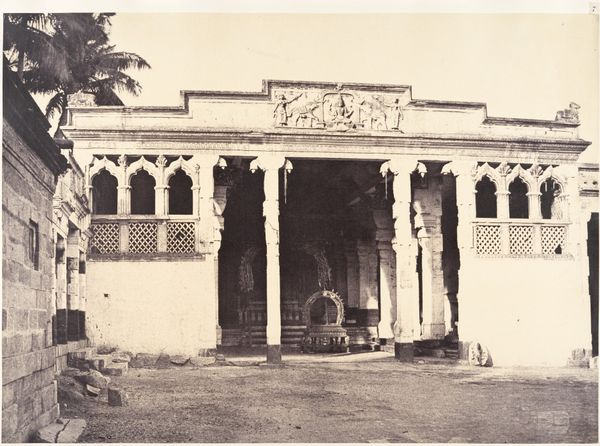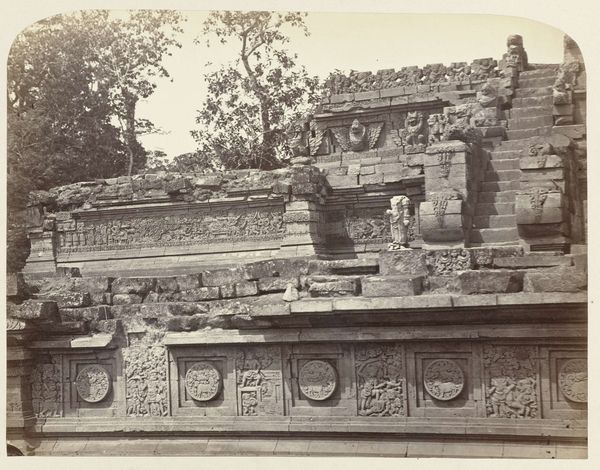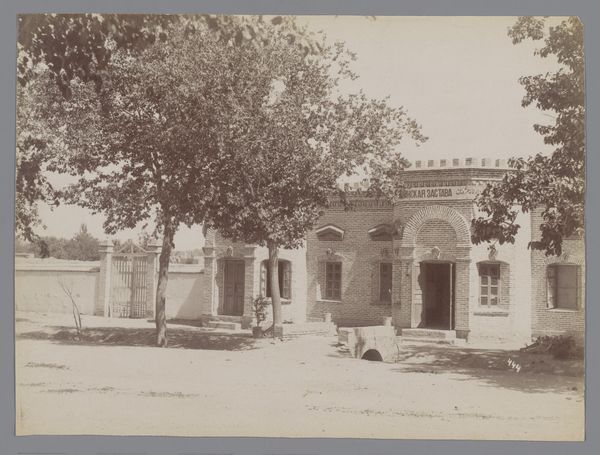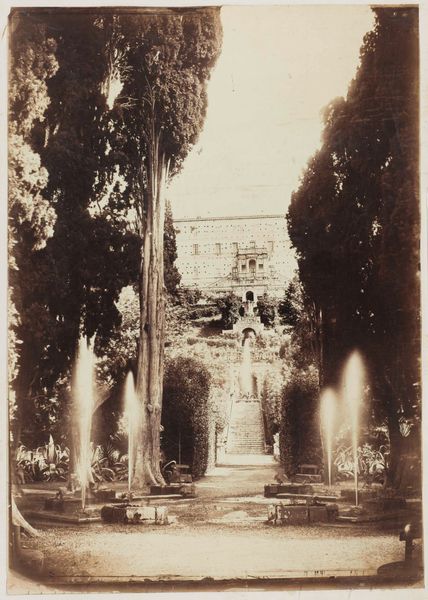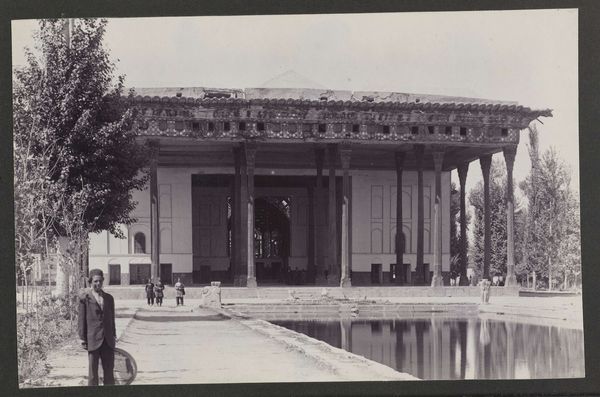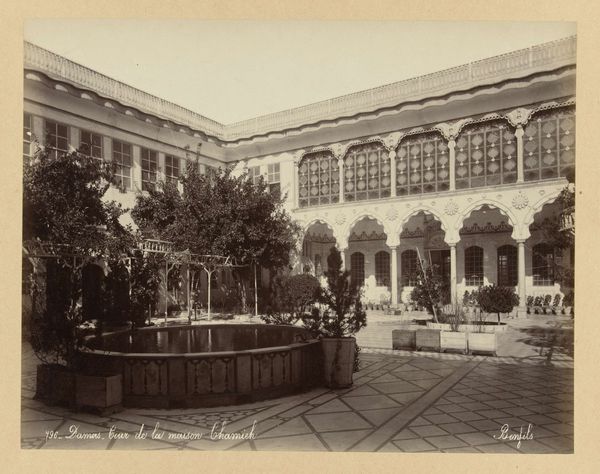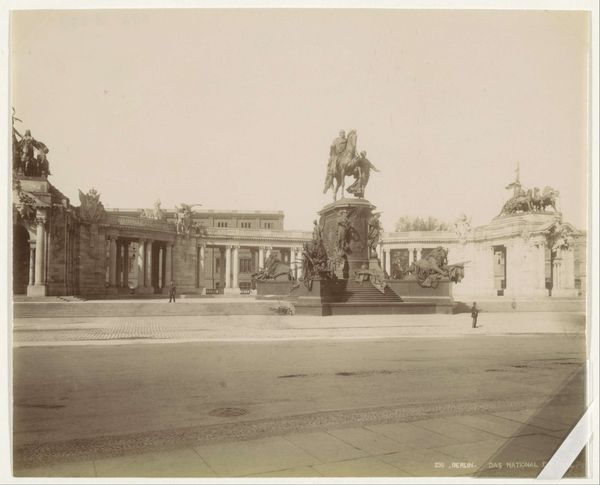
print, photography, architecture
# print
#
memorial
#
landscape
#
historic architecture
#
traditional architecture
#
photography
#
islamic-art
#
architecture
#
historical building
Dimensions: height 234 mm, width 290 mm
Copyright: Rijks Museum: Open Domain
Curator: Let's delve into this photograph, “Tombe van Mirza Jehangir te Delhi,” captured by Samuel Bourne between 1863 and 1865. It's a print, showcasing a historic tomb in what is now Delhi, India. Editor: Immediately, I'm struck by the sense of quietude. The tonality creates this very still, almost melancholic mood, contrasting against the very defined geometrical forms of the architecture itself. Curator: Notice how Bourne employs light and shadow, structuring the photographic space. The patterns within the marble create textural dynamism. Note the orthogonals leading us into a measured architectural understanding of the monument’s planes. Editor: Right, and beyond that architectural presence, marble as material bears connotations, here suggesting wealth, power, and the memory of someone important. What I find captivating is that even without color, this image evokes so much of that history. The details become symbolic carriers of his cultural significance. Curator: Indeed, the repetitive motifs, particularly in the screened areas, provide a complex play of transparency and opacity. The use of framing adds a layering effect that echoes ideas around what the memorial is guarding, or trying to showcase. Editor: I would wager it underscores this sense of enclosure—protection even—around what must be a sacred space, almost an earthly separation. One wonders about Mirza Jehangir's story within that history and the role these visual symbols played for those remembering him. Curator: The structure’s design elements certainly are fascinating, drawing from prevalent Islamic architectural conventions that echo the authority embedded in the aesthetic of that time. Editor: This is true. Bourne masterfully uses these elements as visual keys unlocking cultural memory. In a single image, there are whispers about life, death, and how legacies persist across time. I hadn't considered how it all relates to power dynamics. It enriches the narrative. Curator: It's a study in how historical and cultural meanings reside so poignantly within visual form. I see photography functioning almost as visual preservation here. Editor: A moment suspended. Thank you; this dialogue changed how I see both photography and our tendency to find meaning in what remains, and how it relates to remembrance itself.
Comments
No comments
Be the first to comment and join the conversation on the ultimate creative platform.
